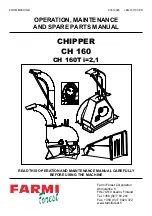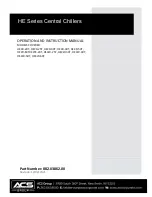
RLC-SVX14H-GB
33
Liquid Line Sizing
Trane recommends that the liquid line diameter be as
small as possible, while maintaining acceptable pressure
drop. This is necessary to minimize refrigerant charge.
The total length between the components must not
exceed 61 m (actual) or 91 m equivalent.
The liquid line risers must not exceed 4.5 m from
the base of the air-cooled condenser. The liquid line
does not have to be pitched. Line sizing must be
done manually not to violate the 2.8°C subcooling
requirement at the EXV.
Liquid lines are not typically insulated. However, if the
lines run through an area of high ambient temperature
(eg. boiler room), subcooling may drop below required
levels. In these situations, insulate the liquid lines.
Use of a liquid line receiver is not recommended
because it adds to the overall refrigerant volume of the
circuit.
Note: In case of power failure to the expansion valve, the
amount of liquid refrigerant contained in the refrigerant
system must not exceed the holding capacity of the
evaporator. See Table 11 for the maximum allowable
charge in each circuit.
Discharge (Hot Gas) Line Sizing
The discharge lines should pitch downward, in the
direction of the hot gas fl ow, at the rate of 12.5 mm per
each 3 meters of horizontal run.
Discharge line size is based on the velocity needed to
obtain suffi cient oil return.
Discharge lines are not typically insulated. If insulation is
required, it should be approved for use at temperatures
up to 110°C (max discharge temp).
Note: The discharge line should drop well below the
compressor discharge outlet before beginning its
vertical rise. This prevents possible refrigerant drainage
back to the compressor and oil separator during the unit
STOP cycle. Refer to Figure 8 and 9 for details.
Split system installation
















































